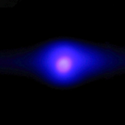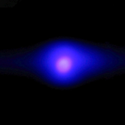Atoms in a lattice keep time
If your wristwatch was as accurate as today’s atomic clocks, it would not gain or lose a second in 80 million years. In the United States, announcements of time come from Boulder, Colorado, which houses the atomic fountain clock that defines the second as 9,192,631,770 oscillations between the hyperfine ground states of the cesium atom.
Researchers are always looking for improvements to this current time (and frequency) standard, which is important for broadcasting and navigation. Single trapped ions and optical lattices offer two alternative systems that are being investigated. Nathan Lemke and colleagues at NIST in Boulder, Colorado, report an experiment in Physical Review Letters that uses atoms with a nuclear spin of in an optical lattice for an atomic clock. An optical lattice clock benefits from being highly stable, and unlike other lattice clocks, Lemke et al.’s clock is based on spin- atoms, an atomic system offering experimental simplicity with the potential for high accuracy.
The NIST group traps and cools neutral atoms and loads them into a one-dimensional lattice, so that about 30,000 atoms fill several hundred lattice sites. A laser drives an atomic transition between two energy levels in the atoms, called the clock transition. The uncertainties in the measured transition frequency, arising from systematic effects—including the Stark effect, atomic collisions, inhomogeneous excitation of the atoms, ambient temperature, and laser noise—are measured to determine the clock’s accuracy.
Lemke et al. compare their optical lattice clock with the current standard atomic fountain clock and find that the accuracy of the lattice clock potentially challenges the current standard. – Sonja Grondalski





